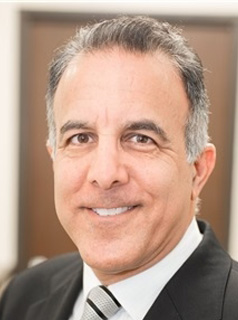Researchers Find New Drug That Grows Human Hair
 Many men are affected by hair loss as they grown older. Hair loss, also known as alopecia, results from many different causes. For men, baldness is usually linked to the male hormone testosterone, an androgenic hormone. Find out about these innovative ways to treat male pattern baldness.
Many men are affected by hair loss as they grown older. Hair loss, also known as alopecia, results from many different causes. For men, baldness is usually linked to the male hormone testosterone, an androgenic hormone. Find out about these innovative ways to treat male pattern baldness.
In recent years, bimatoprost has been marketed and sold to lengthen eyelashes. However, recent research has shown that bimatoprost also has the ability to grow human hair on the scalp. The discovery was recently made by researchers Valerie Randall and colleagues at the University of Bradford in the UK.
Experiments Prove that Bimatoprost Regrows Hair
The scientists conducted three different clinical experiments. In the first two experiments, Randall took hair follicles from a human scalp along with human cells and placed them in a culture environment. With the third experiment, the researchers used mice subjects. They applied the bimatoprost to bald spots on the mice, and as a result, they found that the hair regrew in a short time period. Their experiments proved that the medication bimatoprost could regrow hair.
FDA Approval in the Works
The research team believes that their chances of getting the medication FDA approved are good, as it is already used by humans for glaucoma and eyelash lengthening. Of course, clinical studies on humans for hair regrowth using bimatoprost will have to be done first. Also, the researchers will need to make sure that bimatoprost does indeed work on the human scalp, and they must formulate a lotion or cream as a delivery system for the medication. To assure safety, they plan to study side effects, adverse reactions, and dose protocol.
Balding Man’s New Best Friend
Dubbed as the long-awaited follow up to Viagra, bimatoprost could be the balding, middle-aged man’s new best friend. Because this drug is being used daily by both men and women, experts already know it is both safe and effective. Now, the drug company just has to market it for hair regrowth on the scalp.
The Testosterone Factor
Testosterone in the blood stream, not bound to proteins, is converted into the compound dihydrotestosterone (DHT). Some men are genetically predisposed to losing hair in later life because their hair follicles react to DHT by shrinking. By lowering the level of free testosterone or by preventing its conversion to DHT, some men can avoid hair loss. As DHT reacts with the hair follicle, the follicle shrinks until it eventually has a shortened cycle. Because there is prevention of the development of young hair without pigment, peach fuzz usually precedes complete baldness.
Male Pattern Baldness Genetically Determined
Male pattern baldness does not mean complete loss of hair. Complete hair loss from the head is called alopecia totalis, and loss of all body hair is known as alopecia universalis. Most male pattern baldness is characterized by a receding hairline or hair loss at the crown of the head, eventually with both areas joining together and leaving a ring of hair around the back of the head.
Male pattern baldness is genetically determined by either parent, and most men have a 1 in 4 probability of experiencing hair loss as a result of this mechanism. Men whose fathers have male pattern baldness are more than twice at risk for baldness than men whose fathers have a good head of hair. This leads researchers to speculate that male pattern baldness is linked to the Y chromosome, but alopecia androgenata has also been linked to genes on the X chromosome. Additionally, male pattern baldness of the vertex is seen in those with coronary vascular disease (Yamada et. al., 2013)
Baldness Associated with Age
One interesting observation is that the prevalence of baldness among men corresponds approximately with their age, with about 25% of men aged 30 experiencing some baldness, and with 66% of all men experiencing some hair loss by age 60. Women, in contrast, are rarely affected by hair loss until later in life, and their numbers are smaller. Thought to be involved is the androgenic receptor, and women have small amounts of circulating androgens like testosterone.
Lower Insulin and Decrease Stress to Fight Hair Loss
Increased insulin levels are often a result of lifestyle choices, like a high carbohydrate diet. The high levels of circulating insulin cause baldness. The insulin receptors on the body's cells become resistant to insulin, and the body produces more than it needs. High levels of insulin are not only associated with hair loss, but with type 2 diabetes, as well. Eating a healthy diet and exercising regularly prevents hyperinsulinemia and hair loss.
Stress is a cause of hair loss in both men and women. Researchers showed with mice subjects that increased levels of corticotropin-releasing hormone (CRH) caused hair loss on the animals’ backs. When the CRH was blocked, the hair grew back. A good lifestyle adjustment to prevent the onset of hair loss is stress reduction. Simple things like frequent walks and deep breathing can combat baldness.
Propecia, Rogaine and Transplantation
Some men choose to treat their hair loss as soon as it begins with drugs like Propecia, which is also known as finasteride. The FDA approves this drug for treatment of male pattern baldness, and it works by binding the enzyme that causes the conversion of testosterone to DHT. Rogaine works, too, and when applied topically it prevents further hair loss by an unknown mechanism. A more expensive and invasive method of treating hair loss is by transplanting patches of hair from one part of the scalp to another, because the areas where hair grows are not sensitive to the circulating DHT. Baldness researchers studied transplantation of follicular units and have made progress with successful treatment (Wang et al., 2013).
New Treatment with Laminims-511
Researchers in the field of genetic medicine at New York Presbyterian Weill Cornell Medical Center in Manhattan discovered a molecule, called laminins-511, which initiates hair growth by stimulating follicles that are stuck in the growth cycle. They made this discovery on mice, and although the findings of their study have yet to be generalized to humans, they are hopeful. So soon, they hope to provide a treatment for male pattern baldness with a product that contains the laminins-511 molecule. Laminins-511 is a protein messenger that signals the hair follicles to start a new growth cycle. There is hope that laminins-511 will be useful in men whose hair follicles have shrunk in reaction to circulating DHT (Clark, 2013).
Herbal Remedies Include Licorice, Rosemary and Green Tea
Licorice prevents the conversion of testosterone to DHT, and when used in shampoo, may be a natural remedy for male pattern baldness. Rosemary is an herb that stimulates circulation when massaged into the scalp. Currently, a favorite herbal remedy among men is saw palmetto extract, made from the berry extract (not the dried berries). This naturopathic remedy is also protective of the prostate gland.
Other naturopathic remedies that have shown some benefit anecdotally include gingko biloba, which is supposed to improve blood circulation to skin and brain, thus delivering more nutrients to the hair follicle. In light of the fact that poor nutrition can cause hair loss, this remedy makes sense. Also, green tea has catechins, which may inhibit the enzyme that converts testosterone into DHT (Traditional Naturopath, 2008)
In China, He Shou Wu, or polygonum multiflorum has long been used to reduce hair loss. It can be taken as tea or in a tablet. Another herbal product is Pygeum which possesses catechins, and comes from the bark of the evergreen. It is also used to treat prostate hypertrophy. Stinging nettle has the ability to block the conversion of free testosterone into DHT, and for this reason, it is another natural remedy widely used among men with male pattern baldness. Finally, some doctors suggest adding some sage (salvia officinalis) extract to your shampoo to prevent loss of both hair and hair color.
Final Thoughts
Male pattern baldness affects millions of men worldwide, and it increases in prevalence with advancing age. Common causes include DHT reaction and high levels of testosterone, genetic predisposition, excessive insulin in the bloodstream, and stress. Many treatment options are available for you to choose from, including conventional medical treatments like Rogaine, Propecia, and transplantation. Or maybe you want to modify your lifestyle and try herbal remedies. Whatever your choice, there are many ways to treat male pattern baldness.
References
Randall, V. et al. (2012). The prostamide-related glaucoma therapy, bimatoprost, offers a novel approach for treating scalp alopecias. FASEB. DOI: 10.1096/fj.12-218156
BMJ Open (2013) Apr 3;3(4). doi: pii: e002537. 10.1136/bmjopen-2012-002537. Print 2013.
Clark, L. of Men's Health (2013). The solution to male pattern baldness? Derived from http://www.menshealth.com/health/latest-research-hair-loss.
Prager N, Bickett K, French N, Marcovici G. A randomized, double-blind, placebo-controlled trial to determine the effectiveness of botanically derived inhibitors of 5-alpha-reductase in the treatment of androgenetic alopecia. J Altern Complement Med. 2002;8(2):143-152
Wang J, Fan J, Chai J. (2013). Aesthetic Correction of Cicatricial Sideburn Alopecia Using Follicular-Unit Hair Grafts. Dermatolologic Surgery. doi: 10.1111/dsu.12146.
Yamada T, Hara K, Umematsu H, Kadowaki T (2010). Male pattern baldness and its association with coronary heart disease: a meta-analysis.

WARNING: Limitations of Online Doctor/Medical Consultations and Online Prescriptions, QuickRxRefills Cannot and Will NOT Prescribe, Dispense, or Resell any and all medications Narcotics/Controlled Substances (this policy is fully enforced by the Drug Enforcement Administration (DEA)) for Anti-depressants, Pain, Anxiety, Weightloss, Sleep, ADHD/ADD, Anabolic Steroids, Testosterone Replacement Therapy and any and all Medications that contain GabaPentin or Pseudroephedrine including non-controlled substances or any medications that are considered controversial, Off Labeled (Growth Hormone aka HGH) or recalled in nature such (i.e. Retin-A, Accutane). Furthermore, QuickRxRefills is not a substitute for an office based physician in your location nor is it a substitute for Emergency Medical Care or 911. If you do experience a "true" medical emergency your are encouraged to pick up the phone and dial 911 as soon as possible.






